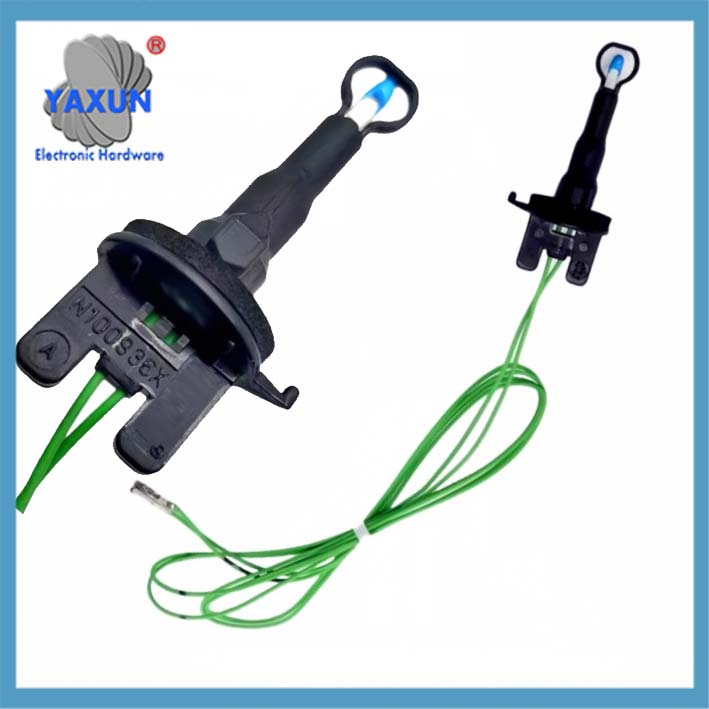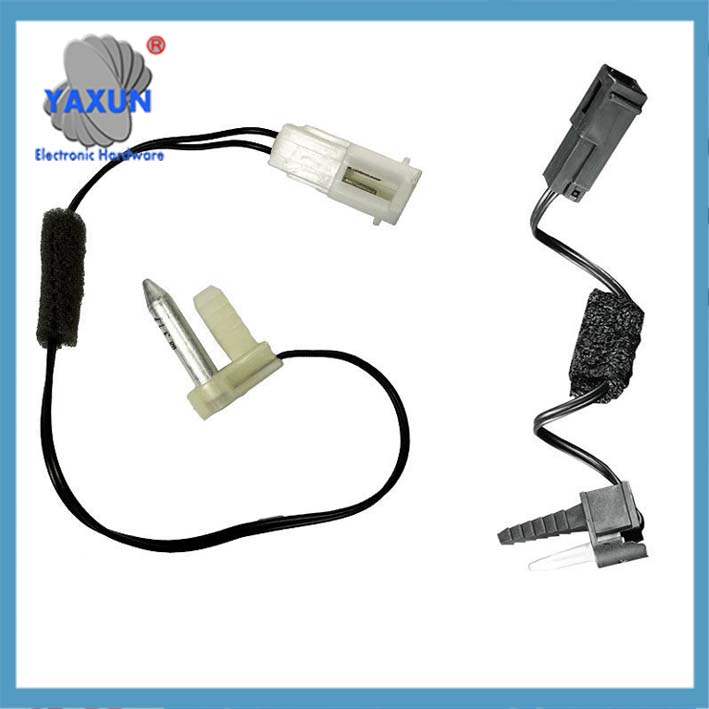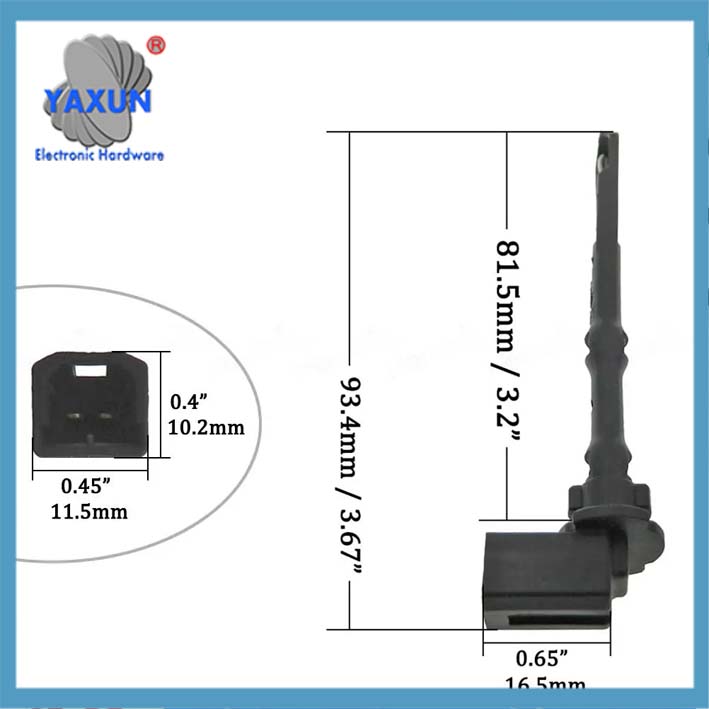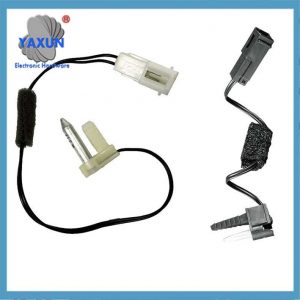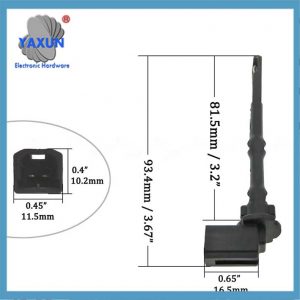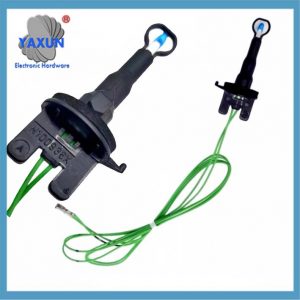Productcategorieën
- thermische zekering 32
- opbouwzekeringen 12
- thermistor 36
- PCB-gemonteerde zekeringhouder 27
- Kabelboom 6
- Blade-zekeringhouders 17
- thermostaat 50
- Elektrische zekering 24
- Automotive temperatuursensor 7
- Thermische stroomonderbreker 22
- Zekeringkast-houder 36
- Temperatuursensor 75
- Thermische schakelaar 68
- Auto zekering 20
- Zekeringen vastschroeven 8
Producttags
Functie en toepassing van de temperatuursensor van de airconditionerverdamper
De sensor informeert de compressor van het AC-systeem wanneer aanpassingen nodig zijn door kleine veranderingen in de kerntemperatuur van de verdamper nauwkeurig te detecteren. Dit helpt bij het handhaven van een consistente koelomgeving in uw voertuig, het verbeteren van uw comfort en de energie-efficiëntie van het systeem.
The problem of the air conditioner evaporator temperature sensor, this time focusing on the small components of the air conditioning system, may actually encounter abnormal cooling.
The air conditioner evaporator temperature sensor involves principles, fault manifestations, maintenance cases, enz. It is necessary to focus on integrating this information: the core function of the evaporator temperature sensor is to prevent frost protection (turn off the compressor when it is close to 0℃) and maintain refrigeration stability. The installation location is usually on the surface of the evaporator fins or nearby pipes. Failures can cause the air conditioner to “exhaust cooling” – hot and cold, or even ice on the evaporator blocking the air outlet.
Pay special attention to several technical details: most sensors are NTC thermistors (high resistance is about 10kΩ at low temperatures), and resistance drift may occur after failure (such as resistance increases, causing the compressor to stop prematurely). The repair cost varies greatly. The replacement assembly of a 4S shop may cost thousands of yuan, while the self-purchased sensor is only a few dozen yuan.
Users may be more concerned about fault judgment and solutions. It is necessary to highlight typical fault characteristics: Bijvoorbeeld, the air volume drops sharply after 10 minutes of refrigeration (a sign of evaporator icing), or a biting cold wind appears when the temperature is set to 26℃ (temperature control failure). The solution should distinguish between professional repairs and DIY processing, with particular emphasis on safe operation – some models require the dashboard to be disassembled, and non-professionals can easily damage the air duct.
The following is a system analysis of the air conditioner evaporator temperature sensor, integrating core functions, fault characteristics and maintenance solutions:
I. Core functions and technical principles
| Fault type | Specific manifestations | Chain risk |
|---|---|---|
| Resistance drift | Frequent start and stop of air conditioner (interval < 2 notulen) | Excessive wear of compressor, fuel consumption increased by 30% |
| Complete failure | Evaporator freezes and no wind at the air outlet (ice layer > 3mm) | Blower motor burns out, repair cost exceeds 800 yuan |
| Signal distortion | Set 26℃ outlet temperature fluctuation up to ±5℃ (such as frostbite/stifling) | Occupants feel uncomfortable, fatigue from long-distance driving |
Anti-frost control
Real-time monitoring of the evaporator surface temperature (working range -30℃~120℃), when the temperature is close to 0℃, the compressor circuit is immediately cut off to prevent the evaporator from freezing and blocking the air duct; the compressor is automatically restarted after the temperature rises to 3-4℃ to ensure the continuity of refrigeration.
Energy efficiency optimization
By dynamically adjusting the compressor start-stop cycle, idling energy consumption is reduced, and the refrigeration efficiency can be increased by 25-30% during normal operation.
Sensor technology
The mainstream adopts NTC thermistor (resistance is about 10kΩ at 20℃). The lower the temperature, the higher the resistance. The signal is transmitted to the air conditioning control unit (ACU) to achieve closed-loop control.
II. Fault symptoms and failure consequences
Geval: Due to sensor failure, the evaporator of Hongguang S model was frozen and dripping during high-speed driving. The cost of replacing the sensor was only 20 yuan (original parts), avoiding the cost of replacing the assembly.
III. Installation location and maintenance points
Hidden location
Located on the surface of the evaporator fin inside the center console (see the schematic diagram). The glove box and cover need to be removed to access. Some models need to remove the elastic buckle.
Installation diagram
Detection method
Resistance test: Standard resistance at 25℃ 5-15kΩ (measured deviation>20% requires replacement).
Voltage diagnosis: Disconnect the plug to measure the ACU terminal voltage (usually 5V), and check the circuit short circuit if abnormal.
Iv. Maintenance plan and technological evolution
Low-cost replacement
DIY replacement: Online purchase of the adapter model (such as Peugeot 307 requires CTS-08 model), the whole process takes about 30 notulen.
4S shop maintenance: including labor costs of about $200.
New generation technology
Bimetallic sensor: Direct mechanical temperature control using the difference in metal expansion coefficients, strong anti-electromagnetic interference.
Redundant design: High-end models add auxiliary sensors, and automatically switch to backup signals when the main sensor fails.
V. Preventive maintenance recommendations
Regular cleaning: Clean the evaporator fins every 2 years to prevent dirt from wrapping the sensor and causing temperature measurement delays.
Filter replacement: Air conditioning filter blockage will increase the risk of evaporator frosting, and it is recommended to replace it every 10,000 kilometers.
Industry trend: In 2025, the new photoelectric sensor will enter the testing phase, and the response speed will be increased to 0.1 seconden (5 times faster than NTC).
Neem contact met ons op
Wachten op uw e-mail, wij zullen u binnen antwoorden 12 uur met waardevolle informatie die u nodig had.
 English
English Afrikaans
Afrikaans العربية
العربية বাংলা
বাংলা bosanski jezik
bosanski jezik Български
Български Català
Català 粤语
粤语 中文(简体)
中文(简体) 中文(漢字)
中文(漢字) Hrvatski
Hrvatski Čeština
Čeština Nederlands
Nederlands Eesti keel
Eesti keel Suomi
Suomi Français
Français Deutsch
Deutsch Ελληνικά
Ελληνικά हिन्दी; हिंदी
हिन्दी; हिंदी Magyar
Magyar Bahasa Indonesia
Bahasa Indonesia Italiano
Italiano 日本語
日本語 한국어
한국어 Latviešu valoda
Latviešu valoda Lietuvių kalba
Lietuvių kalba македонски јазик
македонски јазик Bahasa Melayu
Bahasa Melayu Norsk
Norsk پارسی
پارسی Polski
Polski Português
Português Română
Română Русский
Русский Cрпски језик
Cрпски језик Slovenčina
Slovenčina Slovenščina
Slovenščina Español
Español Svenska
Svenska ภาษาไทย
ภาษาไทย Türkçe
Türkçe Українська
Українська اردو
اردو Tiếng Việt
Tiếng Việt
